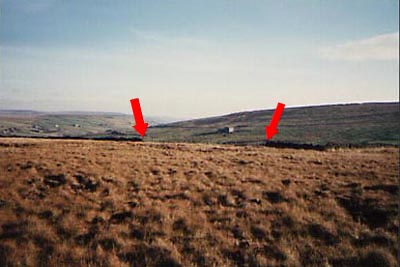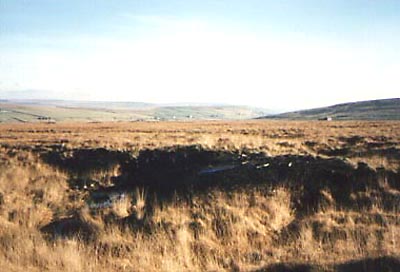 |
Halifax
DT581 - Hoarside Moor
21st January 1943 |
 |
Halifax
DT581 - Hoarside Moor
21st January 1943 |
Last updated 11.11.2010
| Type | Unit | Base | Duty | Crew | Passengers |
| Halifax II | No. 51 Sqn. | Snaith | Gardening | 7 | - |
The evening of the 21st January 1943 saw a major mining operation undertaken by over seventy aircraft, including Halifax and Wellingtons from No. 4 Group, off the Fresian Islands (code name: Nectarines). The group lost three aircraft that night, two Wellingtons from No. 429 (RCAF) Squadron and Halifax DT581 from 51 Squadron. The Halifax had taken off from its base at Snaith near Selby, Yorkshire at 1710 hours and was returning from the operation using dead reckoning navigation. However, unknown to the crew, they had strayed off-course and had in fact overshot their base, ending up in the vicinity of the high ground surrounding Hebden Bridge. At 2225 the aircraft struck Hoar Side Moor at the head of a valley blocked by the mass of the of Black Hameldon, which was later to claim B-24 42-50668 in 1945. The Halifax first struck a dry-stone wall on the edge of the moor, demolishing almost 100 feet of it, before skidding across the flat moor, breaking up as it went and coming to rest in a shallow stream. The respite was short-lived however as fire at once took hold and engulfed the aircraft before two of the crew who were either trapped or had been killed in the initial crash, could be extricated by those who, although injured, had managed to get clear. The aircraft was completely destroyed by the ensuing fire, possibly additionally so by mines still being on board. Certainly a number of mine cradle frames were present at the site at one time and orders for "Gardening" operations forbade the dropping of mines unless the target area could be conclusively identified.
| Name | Position | Status |
| P/O R.D. Getliffe | Pilot | I. |
| Sgt. A. Campbell | I. | |
| P/O E.B. Chatfield | I. | |
| Sgt.A. Campbell | K. | |
| Sgt. G.H. Whyte | K. | |
| Sgt.G.J. Merritt | I. | |
| Sgt. E.R. Smart | I. |
The site of the crash today can be difficult to find, as it lies in a shallow depression on an otherwise relatively flat moor, making it difficult to see until you are almost upon it. At the time of our first visit some 12 years ago there was a large area devoid of vegetation where the aircraft had burnt out and two or three mine cradle frames easily recognisable amongst the remains. Also easily discernible was the activities of several enthusiast groups, with broken spades and discarded work gloves lying around. A recent visit found the area largely reclaimed by nature, with course grass growing over most of the "burnt" area, though fused alloy could still be detected underfoot. The mine "cradles" have also disappeared, though their condition would made them poor prizes for the effort required to recover them and they are more likely to have fallen apart and lie submerged in the soft peat bordering a nearby stream. The only visible reminders of the demise of DT581 today are a couple of sections of weather worn armour plate, a few scattered fragments of fused alloy and a 90 foot long section of missing dry-stone wall on the edge of the moor.
 |
Arrows indicate the edges of the gap in the wall made by DT581 |
 |
Bare peat indicates the "burnt" area, now much overgrown |
Acknowledgements:
Chorley W.R. (RAF Bomber Command Losses Vol.4), Blanchett, C. (From Hull, Hell and Halifax), RAF Form 1180.
This page & all articles on this site Copyright © Nick Wotherspoon 2000